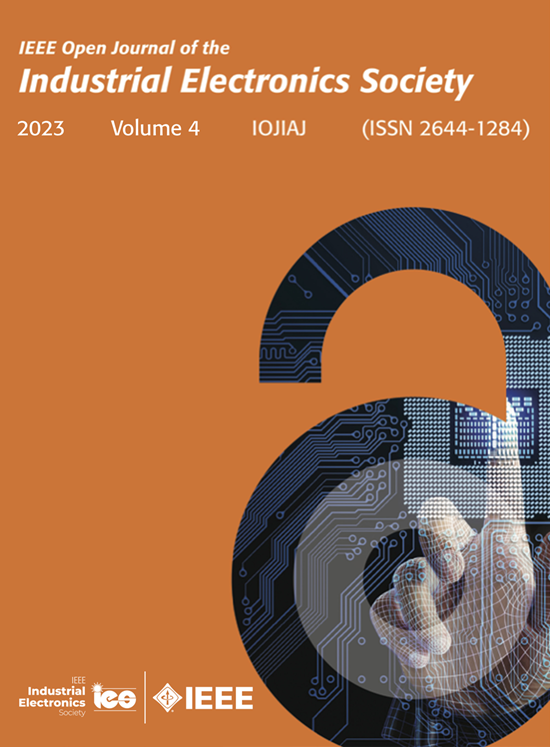Distributed Predictive Control of the Two-Stage Power Converter From the Battery to the Motor Considering the DC-Voltage Prediction
IF 4.3
Q1 ENGINEERING, ELECTRICAL & ELECTRONIC
IEEE Open Journal of the Industrial Electronics Society
Pub Date : 2025-04-29
DOI:10.1109/OJIES.2025.3565293
引用次数: 0
Abstract
In recent years, there has been a notable rise in deploying multiple power converters within integrated systems. Among the most crucial of these systems are electric vehicles, which utilize dc–dc converters and inverters. Interleaved boost converters are desirable for these applications because of their favorable characteristics, including low current ripple, high efficiency, and flexibility. The configuration chosen in this article is a motor drive inverter for permanent magnet synchronous motors powered by a three-phase interleaved boost converter. Implementing control methods independently for multiple interconnected converters can lead to decreased accuracy, increased response time, lack of proper control, and system uncertainty. On the other hand, integrated control of complex systems is not feasible because of computational time limits. This article proposes a distributed finite-control-set model predictive control method to solve the problems caused by the lack of dependence on the controllers. Furthermore, the proposed technique alleviates the computational burden associated with the unified control methods, aiming to enhance feasibility and minimize complexity. Considering the switching states in the prediction equation, the proposed method eliminates both the dc-link voltage and current sensors from the system. Compared to independent control methods, the results showed that the proposed method improved the transient and steady-state performance and reduced the ripple of essential variables such as torque, current, and voltage. In addition, the peak battery current is decreased.考虑直流电压预测的蓄电池到电机两级功率变换器的分布式预测控制
近年来,在集成系统中部署多个电源转换器的情况显著增加。这些系统中最关键的是电动汽车,它利用dc-dc转换器和逆变器。交错升压变换器由于其良好的特性,包括低电流纹波,高效率和灵活性,在这些应用中是理想的。本文中选择的配置是由三相交错升压变换器供电的永磁同步电动机的电机驱动逆变器。对多个互连转换器单独实施控制方法可能导致精度降低,响应时间增加,缺乏适当的控制和系统不确定性。另一方面,由于计算时间的限制,复杂系统的集成控制是不可行的。本文提出了一种分布式有限控制集模型预测控制方法,以解决对控制器缺乏依赖所带来的问题。此外,该技术减轻了统一控制方法带来的计算负担,旨在提高可行性和最小化复杂性。考虑到预测方程中的开关状态,该方法将直流链路电压和电流传感器从系统中去除。结果表明,与独立控制方法相比,该方法提高了系统的暂态和稳态性能,减小了转矩、电流和电压等重要变量的纹波。此外,降低了电池的峰值电流。
本文章由计算机程序翻译,如有差异,请以英文原文为准。
求助全文
约1分钟内获得全文
求助全文
来源期刊

IEEE Open Journal of the Industrial Electronics Society
ENGINEERING, ELECTRICAL & ELECTRONIC-
CiteScore
10.80
自引率
2.40%
发文量
33
审稿时长
12 weeks
期刊介绍:
The IEEE Open Journal of the Industrial Electronics Society is dedicated to advancing information-intensive, knowledge-based automation, and digitalization, aiming to enhance various industrial and infrastructural ecosystems including energy, mobility, health, and home/building infrastructure. Encompassing a range of techniques leveraging data and information acquisition, analysis, manipulation, and distribution, the journal strives to achieve greater flexibility, efficiency, effectiveness, reliability, and security within digitalized and networked environments.
Our scope provides a platform for discourse and dissemination of the latest developments in numerous research and innovation areas. These include electrical components and systems, smart grids, industrial cyber-physical systems, motion control, robotics and mechatronics, sensors and actuators, factory and building communication and automation, industrial digitalization, flexible and reconfigurable manufacturing, assistant systems, industrial applications of artificial intelligence and data science, as well as the implementation of machine learning, artificial neural networks, and fuzzy logic. Additionally, we explore human factors in digitalized and networked ecosystems. Join us in exploring and shaping the future of industrial electronics and digitalization.
 求助内容:
求助内容: 应助结果提醒方式:
应助结果提醒方式:


